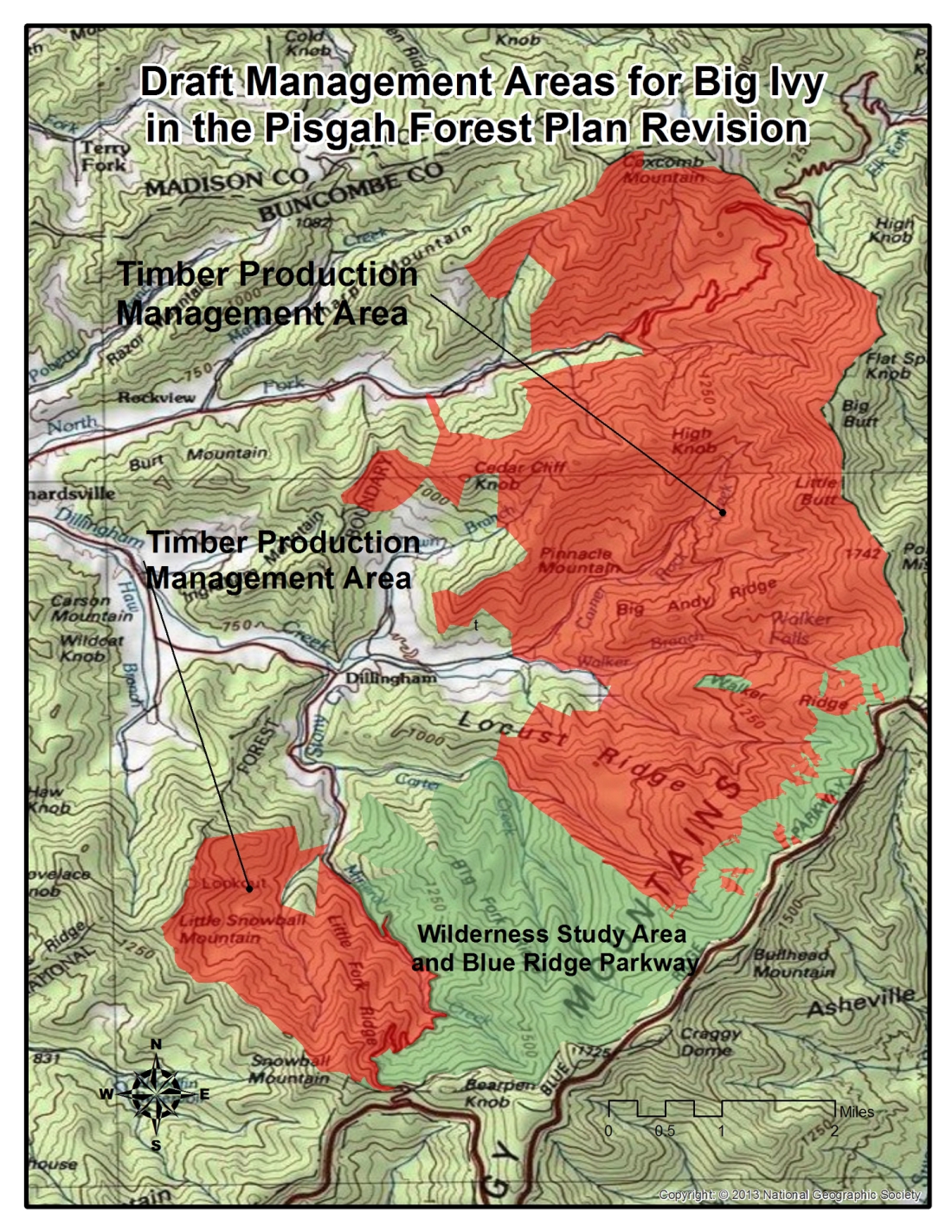A grassroots group is organizing against a U.S. Forest Service plan that would make it easier to log in a popular section of Pisgah National Forest in Buncombe County.
A U.S. Forest Service proposal calls for designating most of the Big Ivy area near Barnardsville as a timber production management area. Before finalizing the change, the Forest Service is accepting public feedback and will hold a Thursday, Feb. 5, meeting at 7 p.m. at the Big Ivy Community Center (540 Dillingham Road).
An activist group called Friends of Big Ivy has launched a website and is organizing residents to show up to the meeting to speak out against the plan.
“It’s good that we have a lot of people excited about trying to protect it,” says organizer Karin Heiman, a consulting biologist. “More focus should be on recreation and scenic values and less on timber values.”
The area is easily viewed from heavily-trafficked Blue Ridge Parkway destinations, such as Craggy Gardens and is a popular area for hiking, hunting and fishing, among other outdoor activities. The area was also a filming location for several movies, including The Hunger Games.
In addition, Big Ivy is “one of the most important conservation areas in Western North Carolina,” says Josh Kelly, a biologist for the local MountainTrue environmental nonprofit. “It’s fairly unique because of its combination of older forests and rare species. …. It’s some of the highest quality forest in WNC.”
Big Ivy is the home of more than 30 rare plant and animal species, including some that are federally endangered, says Kelly. It also encompasses more than 3,000 acres of old growth forests, which are very rare in the Eastern U.S.
About 20 years ago, during the Forest Service’s last major planning process, Big Ivy was also slated for logging before activists successfully rallied against it. Heiman says she was surprised to see history repeating itself in the wake of the previous outcry decades ago, which she also helped organize. “I don’t know if they forgot about what happened in the past because we have a lot of new people in the Forest Service,” she says.
The Forest Service argues that logging can actually help aid habitat for some plants and animals by creating younger forests, as well as providing economic benefits. But Heiman and other activists reject that argument. About 75 percent of the profits from logging would go outside the county, she says. “And if you look at the area is a whole, there’s so much early succession outside the National Forests, we don’t need to open up more early succession habitat within the National Forests.”
The Forest Service’s overall plan covers the entirety of the Pisgah and Nantahala National forests, encompassing more than 1 million acres around the region. The first draft of the plan calls for increasing the amount of total forest open to logging by about 30 percent, according to Kelly. However, the plan won’t be finalized for at least another year. And in the meantime, the Forest Service is taking into account public reactions. The final document will guide land use decisions for the next decade.
For more on the plan and how to submit feedback to the Forest Service, visit its website here. Asheville-based media nonprofit Carolina Public Press has also covered the planning process extensively with its Forest Lookouts series. For a Mountain Xpress profile of Josh Kelly, see Erik Peake’s article, “By the Bark.”



This national forest near Barnardsville (Big Ivy) ,NC., was logged in the 1940’s. Some of the funds obtained from this logging went into the
construction of the rock facility in Barnardsville, NC, which is now Ohio Electric Co. The original use when I was a student consisted of the
Agriculture Department for the local high school. That was the original intent in building. The family who had the sawmill, and employed
several locals, was Vestal Dillingham. It was ECONOMICALLY OF VALUE.
The great value of the Agriculture Department at the Barnardsville High School inspired me to obtain a B.S. degree in Agriculture.
The mention of rare plants and fish is questionable to me. I would like to have the names of such plants as I have a farm with woodlands
and never have seen anything I cannot identify during my past 80 years of life. You know, I may have cut one down (Oh my gosh). My
farm joins the North Fork Creek. Actually I have never caught a fish during my tries. They must be in another stream as they sure do
not exist in this tributary.
All of the above aside, it is important to ask the question of those resisting logging IF they have wooden furniture in their house? IF
they do, perhaps it was from a forest in another state, or Canadian forest. IF they want wooden furniture or houses, then they need
lumber to create these fantastic items we enjoy in the U.S. The trees noted in this proposed are NOT old growth, as all of these types
were cut in the 40’s. I know, because I was living in that era. Let the truth exist.
Myles